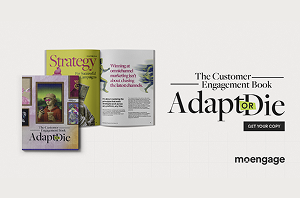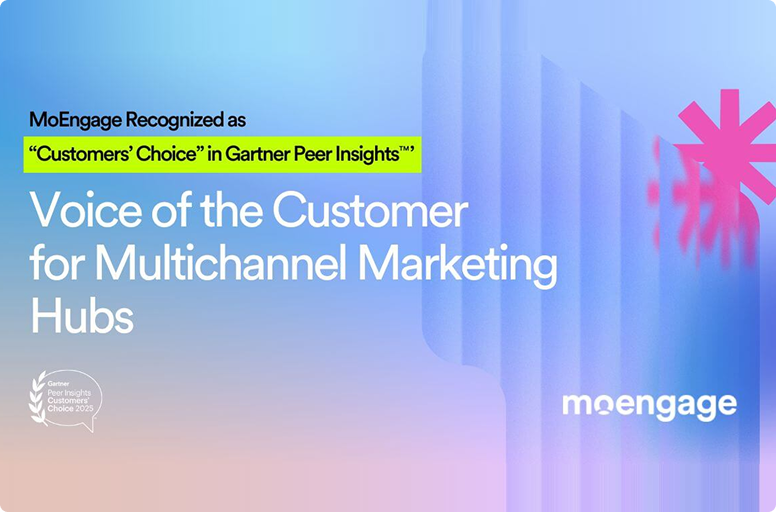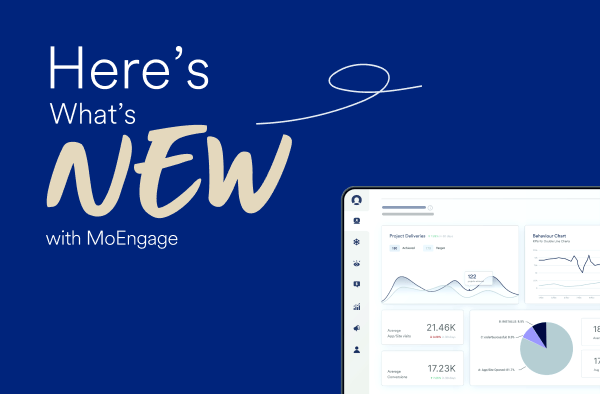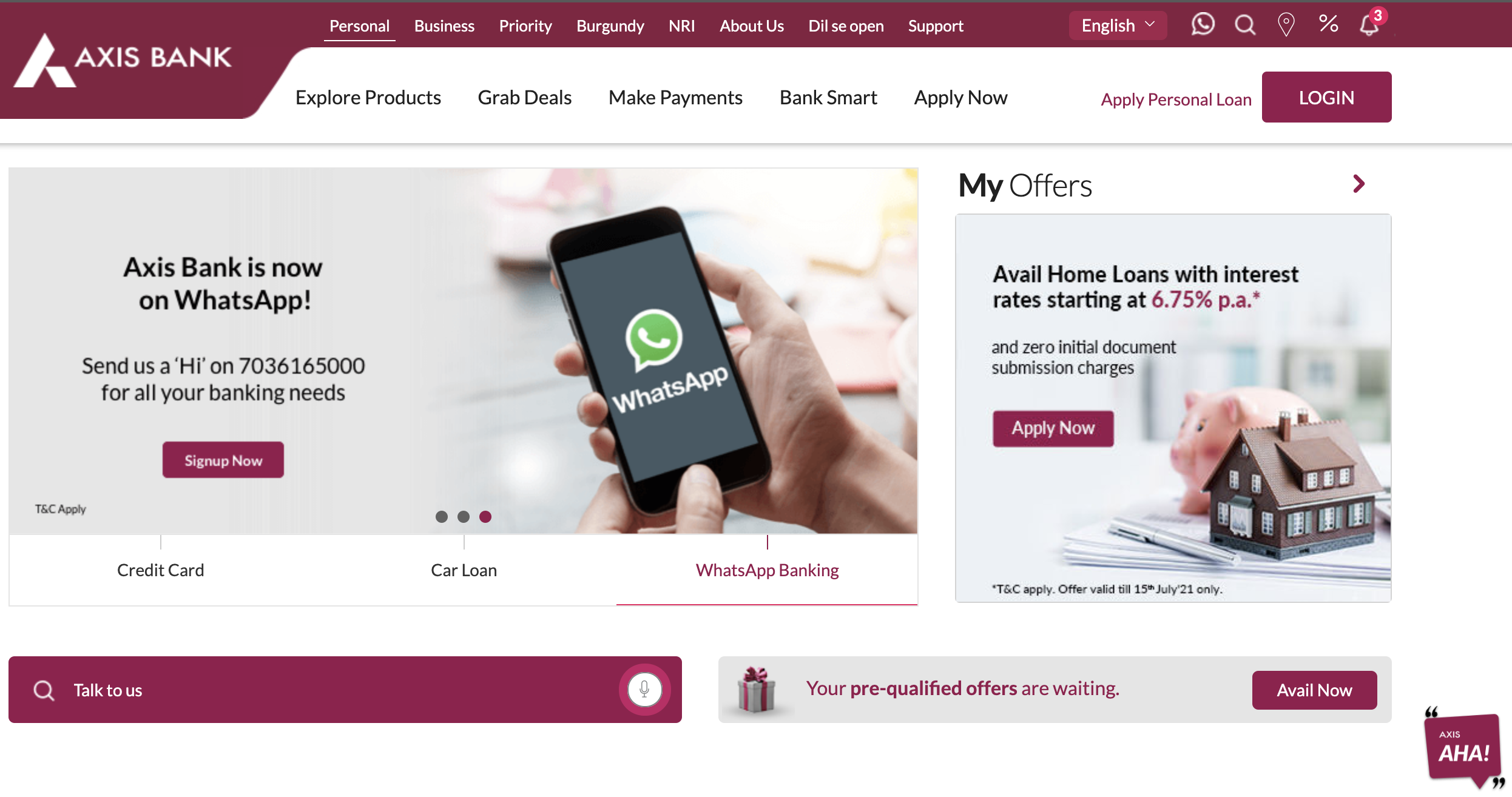7 Brilliant Push Notification Case Studies You Must Read
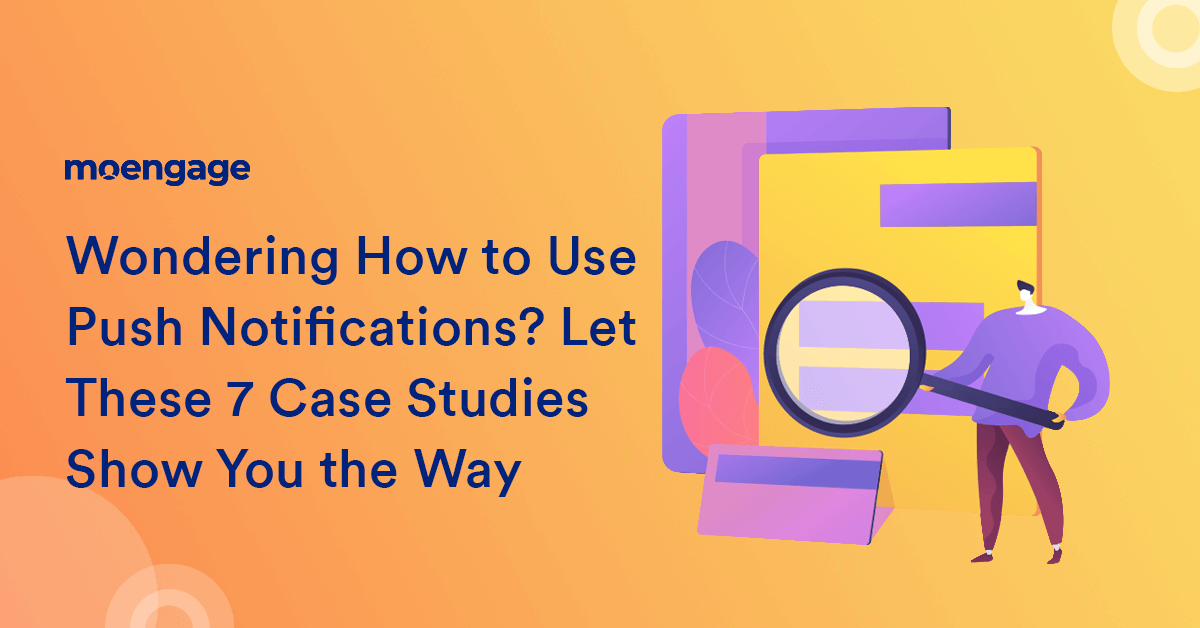
Some people say that push notifications are annoying and unnecessary. The figures tell a different story.
One study shows that 61% of new app users who receive push notifications launched the app within the first month. This is more than double the 28% of installers who did not receive push notifications. Other studies show that marketers can achieve a CTR of up to 30%, ROI of up to 2200%, and a website traffic increase of up to 25%.
The best way to see how push notifications can help you achieve your goals is to discover how others have done it. That is why we’ve put together this compelling list of seven push marketing case studies.
These include diverse sectors. They are:
- A global software and app discovery destination
- An influential online-retailer
- A high-end real estate industry brand
- A leading private sector bank
- A leading sports destination
- A large online electronic commerce website
- An impactful IT and mobile brand
Whatever category you’re in, and whether you’re large or small, established or new, you’ll discover nuggets of wisdom and advice.
1. Softonic’s Hyper-segmentation Approach
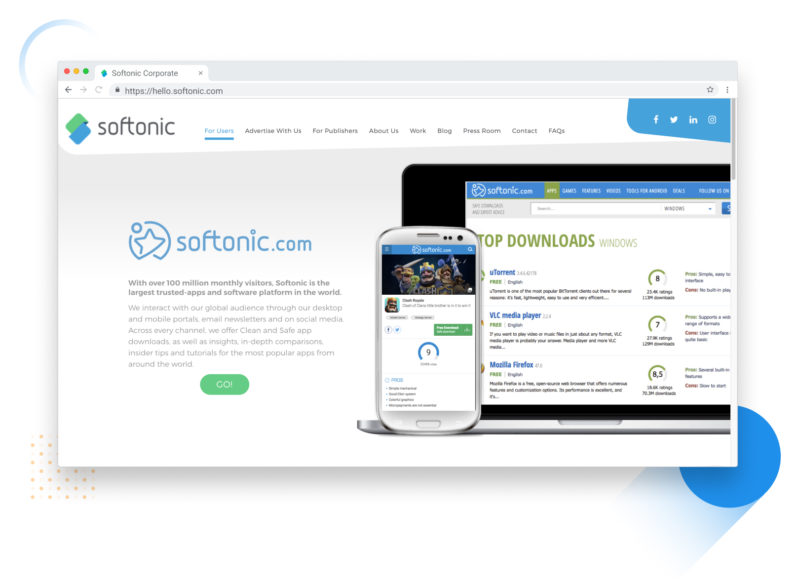
|
With over 100 million monthly visitors, Softonic is one of the leading global software and app discovery destinations. They have downloadable software and apps across hundreds of categories.
Softonic employed a strategy of sending mobile push notifications, targeting their users on Android. The aim was to stay connected with users in more relevant and effective ways.
After selecting the right API, they identified over 100 audience segments. This allowed them to send highly personalized messages to the right people.
Further, they sent pre-built automated notifications to users based on behavioral cues and the right time zones. This made their notifications even more relevant and actionable.
The result: a 2X lift in engagement and retention, with a 50% increase in CTRs.
2. Beyond the Rack’s Timely Moves
|
|
Beyond the Rack is an online retailer of designer clothes. They have roughly 14 million customers.
They had a strategy of sending marketing e-mails to influence consumers based on past purchases. These contained short-term offers of up to 48 hours. The problem was that often, customers would not read the mail on time, and the offer would expire.
This is a situation tailor-made for push notifications. Beyond the Rack used them on the mobile website to target the same consumers. They found a 50% increase in repeat visits within 3 months -with a tangible boost in CTR and revenue.
During the campaign, visitors spent 72% more time on the site and made more purchases as well.
3. Century 21’s Behavior-based Cues
|
|
Century 21 is a well-known and respected name in real estate. They have over 100,000 sales professionals, 7,000 franchised broker offices, and operations in 77 countries worldwide
They wanted to increase the number of active users. They needed greater retention and engagement rates, more app usage, and more leads.
To achieve this, they created segments based on the app install date, the number of days since the last visit, and the number of visits. This helped them to send targeted push notifications and in-app messages.
Their other push activities included notifications that welcomed new users, gave tips, and suggested actions. Inactive users were also targeted by promoting key features. The most active users were asked to rate the app positively. All of these were tested at separate times to optimize reaction rates.
The results were impressive. App usage increased significantly, reaction rates were optimized, and the number of app store ratings increased by as many as six times.
4. Axis Bank’s Financial Solutions
|
|
Axis Bank is a first-generation private sector bank, one of the largest in India. They were keen to make smart use of technology to add value and engagement.
They made use of a three-pronged push notification strategy:
– a specially designed notification for higher web push subscription rate on their website.
– micro-segmented notifications that showed users only the data they were interested in.
– dynamic notifications to engage users on specific sections of their website, such as loan applications.
The result of these three approaches was that they received more than 1 million subscriptions, ensured that about 23% of users remained engaged on their website and 36% became positive leads, and finally, won back 20% of clients who had abandoned their web page.
5. SportsCafe’s Winning Goals
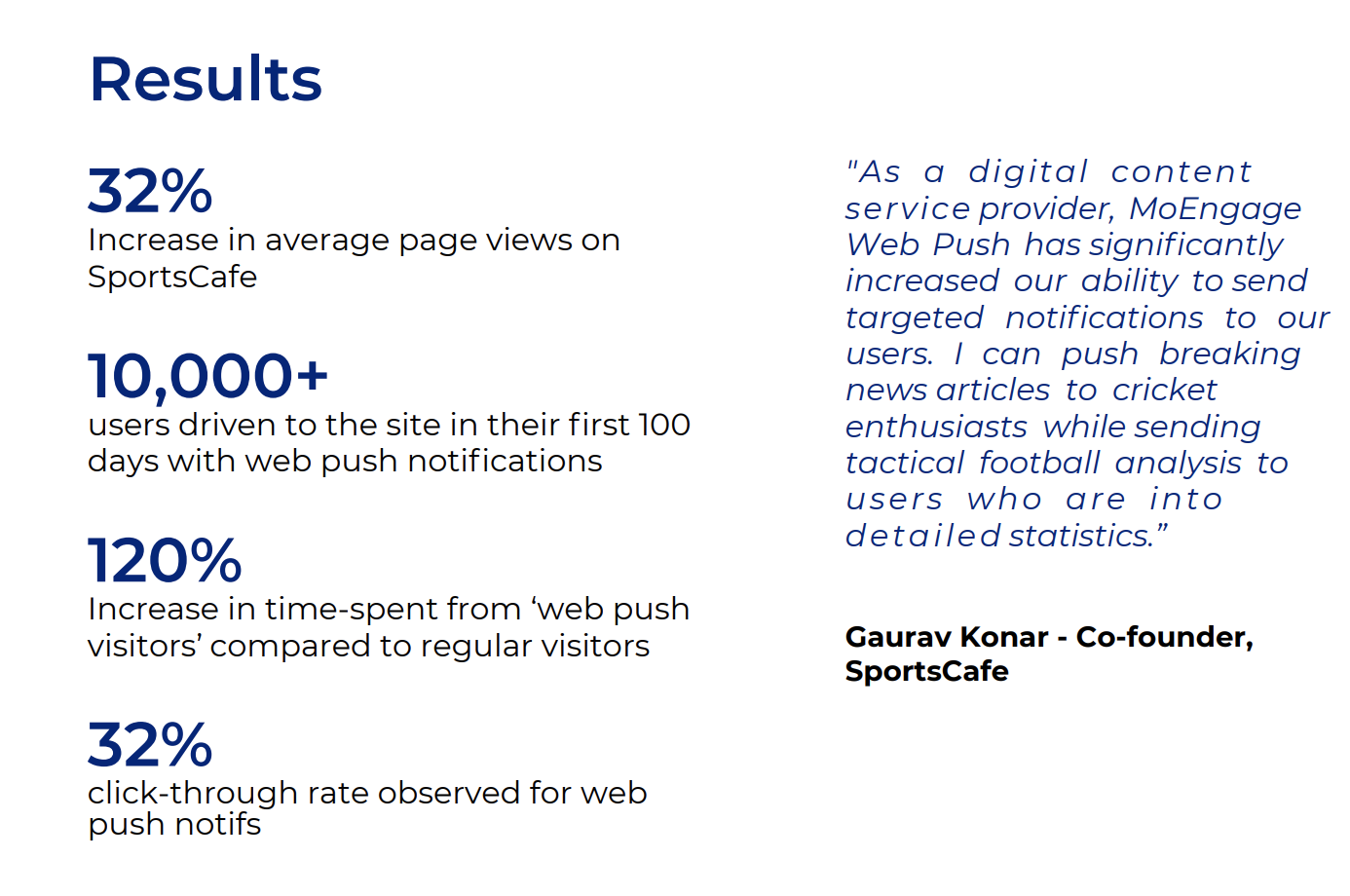
|
SportsCafe is a one-stop online platform for all things sport, with live scores, match reports, features, and much more. As a digital advertising-driven site, it used traditional means of driving traffic. For example, social media and Google AdWords. 90% of their traffic was from anonymous visitors.
They were keen to increase the number of visitors to their website, as well as increase the time spent on it, thus boosting engagement. For this, they began implementing push notifications on desktop and mobile devices.
This is what happened: a 120% increase in time spent from ‘web push visitors’ compared to regular visitors and a 32% click-through rate for web push.
6. Vente-privée’s Sales Push
|
|
Vente-privée is a leading online electronic commerce website that introduced the concept of online flash sales in France. It’s one of the most downloaded shopping apps in the country.
They turned to push notifications with the objective of increasing usage and conversion rates. They wanted to segment and target app users, especially for their sales of the day.
One effective method they employed was to send push notifications before the sale time began. Especially for mobile shoppers, they used geofencing to send notifications to certain users in a particular area when there was a flash sale.
Users who were already subscribed to one of the brands of the day received personalized notifications. Generic sale notifications were sent to the others.
With these initiatives, they managed to optimize purchase funnels to generate more than three billion dollars a year.
7. Intex’s Drips of Success
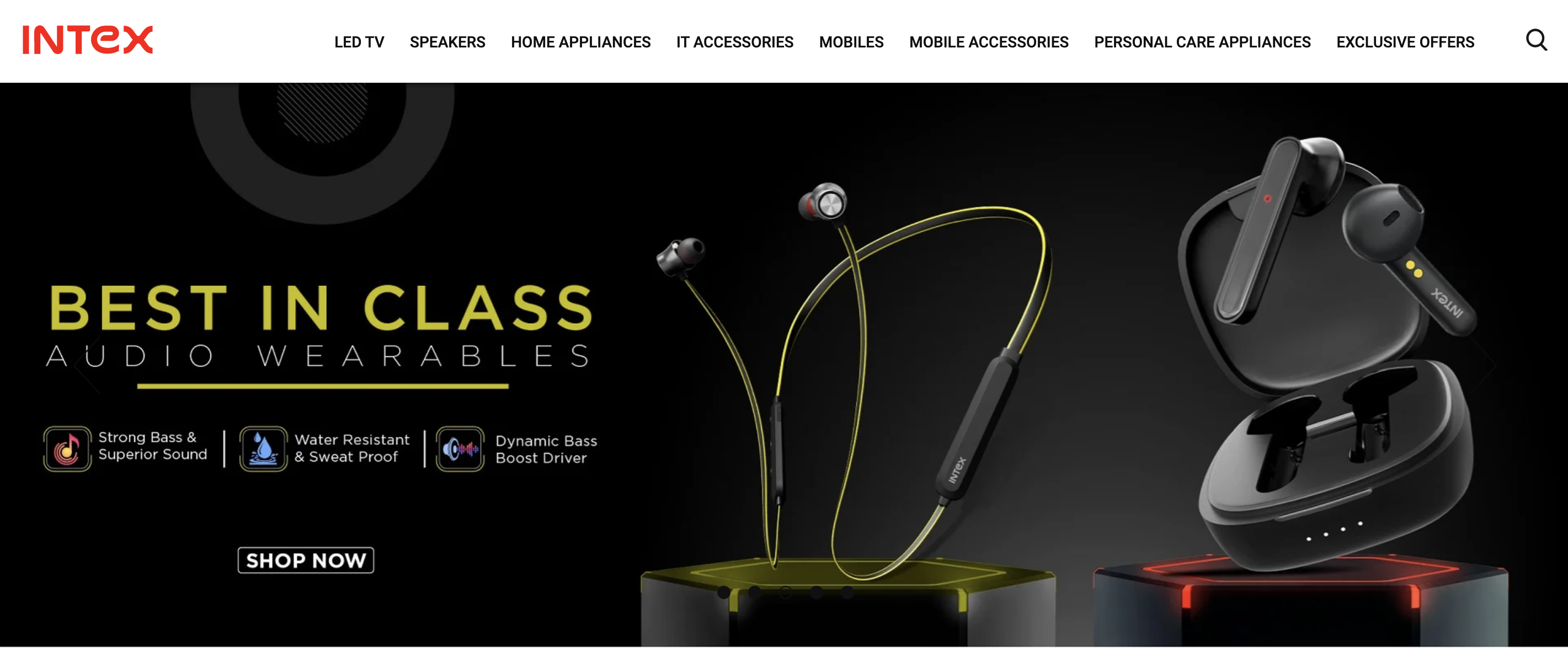
|
Intex is a global brand in consumer electronics and one of the largest mobile phone companies by sales figures. Over time, they had built a push subscriber base of over 30,000+ subscribers.
Their goals now were to inform users of the latest product development and practices. They wanted to re-engage with users effectively and increase notification click rates.
To achieve this, they employed an automated drip notification campaign, which sent push notifications to specific segments. Occasionally, they added new notifications or created separate drip campaigns for different purposes.
Within a few weeks, there was a 15% increase in online traffic. The click rate improved by 31%.
8. OYO’s Amplified Deliveries
OYO Rooms is a leading hospitality unicorn with 1800 hotel properties across 500 cities. It’s known for its technology-driven process with an emphasis on user experience and engagement.
However, they discovered that the delivery rate of their notifications on some Chinese OEMs was extremely low. This was a matter of concern, as the overall adoption of such devices was growing fast, and they didn’t want to lose out on these potential customers.
With MoEngage’s Push Amplification, they managed to significantly improve the delivery rate to 44%.
 |
Personalization was also emphasized. Offers and discounts could be sent to users based on app usage.
Summary
These are just eight companies that achieved their goals with push notifications. Advances in technology and analytics make this much easier. Here, for example, is a white paper on how to predict notification delivery with an 80% accuracy, the highest for any model ever built.
In every category, brands are realizing how push notifications can and should become an essential part of their marketing efforts.
Here’s What You Can Read Next |

